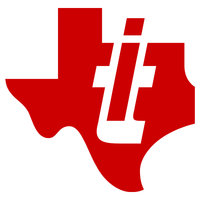
Texas Instruments Inc
NASDAQ:TXN
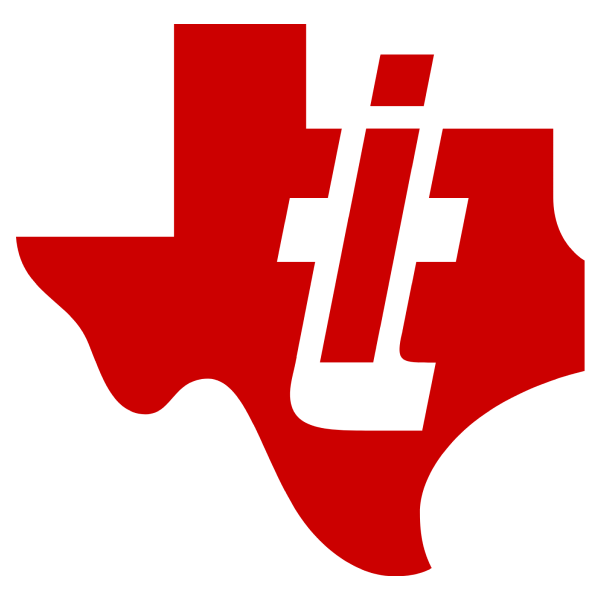

| US |

|
Johnson & Johnson
NYSE:JNJ
|
Pharmaceuticals
|
| US |

|
Berkshire Hathaway Inc
NYSE:BRK.A
|
Financial Services
|
| US |

|
Bank of America Corp
NYSE:BAC
|
Banking
|
| US |

|
Mastercard Inc
NYSE:MA
|
Technology
|
| US |

|
UnitedHealth Group Inc
NYSE:UNH
|
Health Care
|
| US |

|
Exxon Mobil Corp
NYSE:XOM
|
Energy
|
| US |

|
Pfizer Inc
NYSE:PFE
|
Pharmaceuticals
|
| US |

|
Palantir Technologies Inc
NYSE:PLTR
|
Technology
|
| US |

|
Nike Inc
NYSE:NKE
|
Textiles, Apparel & Luxury Goods
|
| US |

|
Visa Inc
NYSE:V
|
Technology
|
| CN |

|
Alibaba Group Holding Ltd
NYSE:BABA
|
Retail
|
| US |

|
JPMorgan Chase & Co
NYSE:JPM
|
Banking
|
| US |

|
Coca-Cola Co
NYSE:KO
|
Beverages
|
| US |

|
Walmart Inc
NYSE:WMT
|
Retail
|
| US |

|
Verizon Communications Inc
NYSE:VZ
|
Telecommunication
|
| US |

|
Chevron Corp
NYSE:CVX
|
Energy
|
Utilize notes to systematically review your investment decisions. By reflecting on past outcomes, you can discern effective strategies and identify those that underperformed. This continuous feedback loop enables you to adapt and refine your approach, optimizing for future success.
Each note serves as a learning point, offering insights into your decision-making processes. Over time, you'll accumulate a personalized database of knowledge, enhancing your ability to make informed decisions quickly and effectively.
With a comprehensive record of your investment history at your fingertips, you can compare current opportunities against past experiences. This not only bolsters your confidence but also ensures that each decision is grounded in a well-documented rationale.
Do you really want to delete this note?
This action cannot be undone.

| 52 Week Range |
145.5185
221.25
|
| Price Target |
|
We'll email you a reminder when the closing price reaches USD.
Choose the stock you wish to monitor with a price alert.

|
Johnson & Johnson
NYSE:JNJ
|
US |

|
Berkshire Hathaway Inc
NYSE:BRK.A
|
US |

|
Bank of America Corp
NYSE:BAC
|
US |

|
Mastercard Inc
NYSE:MA
|
US |

|
UnitedHealth Group Inc
NYSE:UNH
|
US |

|
Exxon Mobil Corp
NYSE:XOM
|
US |

|
Pfizer Inc
NYSE:PFE
|
US |

|
Palantir Technologies Inc
NYSE:PLTR
|
US |

|
Nike Inc
NYSE:NKE
|
US |

|
Visa Inc
NYSE:V
|
US |

|
Alibaba Group Holding Ltd
NYSE:BABA
|
CN |

|
JPMorgan Chase & Co
NYSE:JPM
|
US |

|
Coca-Cola Co
NYSE:KO
|
US |

|
Walmart Inc
NYSE:WMT
|
US |

|
Verizon Communications Inc
NYSE:VZ
|
US |

|
Chevron Corp
NYSE:CVX
|
US |
This alert will be permanently deleted.
Texas Instruments Inc

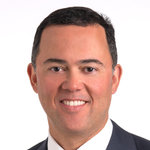


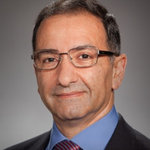
In the bustling landscape of technology, Texas Instruments Inc. (TI) stands out as a robust beacon of innovation and resilience. Born out of transformative visions in the 1930s, TI has evolved dramatically over the decades from its early days as a humble geophysical exploration company. Today, it dominates the semiconductor industry with a primary focus on designing and manufacturing analog and embedded processing chips. These components, often unseen, are the essential lifeblood within countless electronic devices that people and businesses rely on daily—from personal electronics and industrial machinery to automotive applications. TI excels in its ability to consistently produce high-quality, reliable semiconductors that manage power supply, amplify signals, and perform myriad processing tasks with precision and efficiency.
What sets TI apart is not just its advanced technological prowess but also its strategic business model which optimizes cost efficiency and scalability. The company operates a vast network of wafer fabrication plants, allowing it to control its manufacturing process and keep costs competitive while ensuring consistent quality. By capitalizing on a broad portfolio of products and serving a diverse customer base across various sectors, TI generates strong revenues and maintains a sustainable growth trajectory. Its commitment to research and development fuels continuous innovation, positioning TI as a crucial component supplier in a rapidly advancing digital age. This meticulously crafted operation aligns well with its long-term vision, helping TI to turn complex technological advancements into straightforward, enduring profitability.

In the bustling landscape of technology, Texas Instruments Inc. (TI) stands out as a robust beacon of innovation and resilience. Born out of transformative visions in the 1930s, TI has evolved dramatically over the decades from its early days as a humble geophysical exploration company. Today, it dominates the semiconductor industry with a primary focus on designing and manufacturing analog and embedded processing chips. These components, often unseen, are the essential lifeblood within countless electronic devices that people and businesses rely on daily—from personal electronics and industrial machinery to automotive applications. TI excels in its ability to consistently produce high-quality, reliable semiconductors that manage power supply, amplify signals, and perform myriad processing tasks with precision and efficiency.
What sets TI apart is not just its advanced technological prowess but also its strategic business model which optimizes cost efficiency and scalability. The company operates a vast network of wafer fabrication plants, allowing it to control its manufacturing process and keep costs competitive while ensuring consistent quality. By capitalizing on a broad portfolio of products and serving a diverse customer base across various sectors, TI generates strong revenues and maintains a sustainable growth trajectory. Its commitment to research and development fuels continuous innovation, positioning TI as a crucial component supplier in a rapidly advancing digital age. This meticulously crafted operation aligns well with its long-term vision, helping TI to turn complex technological advancements into straightforward, enduring profitability.
Revenue: Q3 revenue was $4.7 billion, up 7% sequentially and 14% year-over-year, coming in about as expected.
Guidance: Q4 revenue is expected between $4.22 billion and $4.58 billion, with EPS guided to $1.13–$1.39.
Margins: Gross profit margin was 57% in Q3, down 50 basis points sequentially, with further margin pressure expected in Q4 due to lower factory loadings and higher depreciation.
End Markets: Industrial grew about 25% year-over-year; automotive, enterprise systems, and communications equipment also saw strong year-over-year and sequential growth.
Inventory & Loadings: Inventory levels are stable and now being held flat-to-down, with wafer starts reduced to match more moderate demand.
Restructuring: $0.08 per share in Q3 charges related to closing two 6-inch fabs and consolidating R&D sites, expected to bring gradual cost benefits through 2026.
China: China demand normalized in Q3 after prior pull-in activity, with no major surprises expected for Q4.
Dividends: Dividend increased by 4%, marking the 22nd consecutive year of increases.
Management

Haviv Ilan is a prominent figure at Texas Instruments Inc. He serves as the President and Chief Executive Officer of the company. Before becoming CEO, Ilan was instrumental in several leadership roles within Texas Instruments, significantly impacting its operations and strategic direction. His roles have included serving as the Senior Vice President, overseeing Embedded Processing and Analog Signal Chain businesses. Ilan's career at Texas Instruments is marked by his expertise in the semiconductor industry and his ability to drive innovation and growth. His leadership has been characterized by a focus on expanding the company's product portfolio and enhancing its manufacturing capabilities, ensuring that Texas Instruments remains a leader in analog and embedded processing technologies. Under his guidance, Texas Instruments has continued to innovate and adapt to changing market demands, maintaining its reputation as a global technology leader. Ilan holds degrees in electrical engineering and an MBA, which have supported his understanding of both the technical and business aspects of the industry.

Ilan's career at Texas Instruments is marked by his expertise in the semiconductor industry and his ability to drive innovation and growth. His leadership has been characterized by a focus on expanding the company's product portfolio and enhancing its manufacturing capabilities, ensuring that Texas Instruments remains a leader in analog and embedded processing technologies.
Under his guidance, Texas Instruments has continued to innovate and adapt to changing market demands, maintaining its reputation as a global technology leader. Ilan holds degrees in electrical engineering and an MBA, which have supported his understanding of both the technical and business aspects of the industry.

Rafael R. Lizardi is an accomplished executive known for his role as the Chief Financial Officer (CFO) of Texas Instruments Inc. He joined the company in 2001 and has held various leadership positions over the years, which have helped him gain a deep understanding of the company's operations and financial strategy. Lizardi has a robust background in engineering and finance, having initially earned a degree in electrical engineering from the United States Military Academy at West Point. He later served as an officer in the U.S. Army, where he developed strong leadership skills. Following his military service, he furthered his education by obtaining a Master of Business Administration (MBA) from Stanford University's Graduate School of Business. Throughout his tenure at Texas Instruments, Lizardi has been instrumental in advancing the company's financial objectives. His leadership has contributed to the organization’s growth, profitability, and shareholder value. As CFO, he is responsible for overseeing financial processes, reporting, planning, and investor relations, ensuring that the company maintains its position as a leader in the semiconductor industry. Lizardi is well-respected for his strategic vision and commitment to operational excellence, playing a key role in guiding Texas Instruments through a rapidly evolving tech landscape while focusing on long-term sustainability and innovation. His expertise in both engineering and finance allows him to effectively bridge technical and financial disciplines within the company.

Lizardi has a robust background in engineering and finance, having initially earned a degree in electrical engineering from the United States Military Academy at West Point. He later served as an officer in the U.S. Army, where he developed strong leadership skills. Following his military service, he furthered his education by obtaining a Master of Business Administration (MBA) from Stanford University's Graduate School of Business.
Throughout his tenure at Texas Instruments, Lizardi has been instrumental in advancing the company's financial objectives. His leadership has contributed to the organization’s growth, profitability, and shareholder value. As CFO, he is responsible for overseeing financial processes, reporting, planning, and investor relations, ensuring that the company maintains its position as a leader in the semiconductor industry.
Lizardi is well-respected for his strategic vision and commitment to operational excellence, playing a key role in guiding Texas Instruments through a rapidly evolving tech landscape while focusing on long-term sustainability and innovation. His expertise in both engineering and finance allows him to effectively bridge technical and financial disciplines within the company.

Hagop H. Kozanian is a key executive at Texas Instruments Inc., where he serves in a senior leadership capacity. He is currently the Vice President of Worldwide Analog Field Sales. In this role, Kozanian is responsible for overseeing the sales operations and strategies for Texas Instruments' analog products on a global scale. Analog technology is critical in bridging the physical and digital worlds, and Kozanian's leadership helps drive the company's initiatives in delivering innovative analog solutions to customers across various industries. With a strong engineering background, Kozanian has been with Texas Instruments for several years, during which he has held multiple positions in sales and management. These roles have allowed him to develop deep expertise in market dynamics and customer needs, helping to position Texas Instruments as a leader in the semiconductor industry. His work involves collaborating with other executives and teams to align the company's products with market demands, fostering strong customer relationships, and driving revenue growth across key segments. Kozanian's leadership is instrumental in maintaining Texas Instruments' competitive edge and expanding its reach within the global market.

With a strong engineering background, Kozanian has been with Texas Instruments for several years, during which he has held multiple positions in sales and management. These roles have allowed him to develop deep expertise in market dynamics and customer needs, helping to position Texas Instruments as a leader in the semiconductor industry.
His work involves collaborating with other executives and teams to align the company's products with market demands, fostering strong customer relationships, and driving revenue growth across key segments. Kozanian's leadership is instrumental in maintaining Texas Instruments' competitive edge and expanding its reach within the global market.

Amichai Ron is a notable executive at Texas Instruments Inc., where he plays a significant role in the company's leadership. He serves as Senior Vice President responsible for the Analog Signal Chain business, which is a crucial part of Texas Instruments' operations, focusing on developing integrated circuits that handle analog and mixed-signal processing. Ron has been with Texas Instruments for many years, contributing to its growth and innovation in the semiconductor industry. His technical expertise and leadership skills have been instrumental in advancing the company's product lines and strengthening its market position. Throughout his career at Texas Instruments, Amichai Ron has been recognized for his strategic insights and ability to drive technological advancements.

Julie C. Knecht is known for her significant role at Texas Instruments Inc., a leader in semiconductor and integrated circuit manufacturing. At Texas Instruments, Julie has served in key leadership positions, leveraging her extensive experience in engineering, management, and product development to drive innovation and operational excellence. Her career at the company is marked by her contribution to advancing technology solutions and optimizing business strategies to meet the needs of various market sectors. Julie's leadership style often emphasizes collaboration, strategic vision, and a commitment to quality and customer satisfaction, making her a respected figure within the organization and the industry.

Dr. Ahmad R. S. Bahai is a prominent figure in the field of electrical engineering and is well-known for his contributions to the semiconductor industry, particularly through his work at Texas Instruments (TI). Dr. Bahai serves as the Chief Technology Officer and Vice President of Texas Instruments. In this role, he is responsible for guiding the company’s technology strategy and overseeing the development of innovative technologies that are essential to TI’s market leadership. Before joining Texas Instruments, Dr. Bahai co-founded Iospan Wireless Inc., a company that played a significant role in developing MIMO (Multiple Input, Multiple Output) technology, which is foundational to modern wireless communication systems such as LTE and Wi-Fi. His work has had a profound impact on improving the capacity and reliability of wireless networks. Dr. Bahai holds a Ph.D. in Electrical Engineering from the University of California, Berkeley. He has authored or co-authored numerous technical papers and is also known for his co-authored book "Adaptive Signal Processing: Next Generation Solutions." Moreover, he holds several patents in the areas of communications, signal processing, and semiconductor technologies. In addition to his industry work, Dr. Bahai is actively involved in academia, frequently engaging with academic institutions to foster research and innovation. His contributions to both industry and academia have made him a respected leader in the field of electronic and electrical engineering.

Before joining Texas Instruments, Dr. Bahai co-founded Iospan Wireless Inc., a company that played a significant role in developing MIMO (Multiple Input, Multiple Output) technology, which is foundational to modern wireless communication systems such as LTE and Wi-Fi. His work has had a profound impact on improving the capacity and reliability of wireless networks.
Dr. Bahai holds a Ph.D. in Electrical Engineering from the University of California, Berkeley. He has authored or co-authored numerous technical papers and is also known for his co-authored book "Adaptive Signal Processing: Next Generation Solutions." Moreover, he holds several patents in the areas of communications, signal processing, and semiconductor technologies.
In addition to his industry work, Dr. Bahai is actively involved in academia, frequently engaging with academic institutions to foster research and innovation. His contributions to both industry and academia have made him a respected leader in the field of electronic and electrical engineering.

Krunali Patel is a notable executive at Texas Instruments Inc., where she plays a significant leadership role. She is known for her extensive experience in the semiconductor industry, particularly in the areas of engineering and product development. At Texas Instruments, Patel has been instrumental in driving innovations within the company’s analog and embedded processing business. Her expertise lies in managing strategic initiatives and guiding teams toward achieving technological advancements, which have significantly contributed to the company's growth and competitive edge in the market. Patel is recognized for her strong leadership skills and her ability to foster collaboration across different divisions within the organization. Under her leadership, Texas Instruments has continued to focus on various market segments, enhancing its product offerings, and maintaining its position as a leader in the semiconductor industry. Patel is also an advocate for diversity and inclusion within the tech community, encouraging the development of future leaders in engineering and technology. Her contributions have made a substantial impact on both Texas Instruments and the broader industry.

Her expertise lies in managing strategic initiatives and guiding teams toward achieving technological advancements, which have significantly contributed to the company's growth and competitive edge in the market. Patel is recognized for her strong leadership skills and her ability to foster collaboration across different divisions within the organization.
Under her leadership, Texas Instruments has continued to focus on various market segments, enhancing its product offerings, and maintaining its position as a leader in the semiconductor industry. Patel is also an advocate for diversity and inclusion within the tech community, encouraging the development of future leaders in engineering and technology. Her contributions have made a substantial impact on both Texas Instruments and the broader industry.
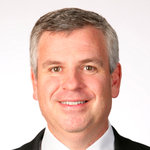
Dave Pahl is a notable figure at Texas Instruments Inc., a global leader in the manufacturing and design of semiconductors and various integrated circuits. He serves as the Head of Investor Relations and is a seasoned professional within the company, having spent numerous years establishing strong relationships with investors and financial analysts. Pahl's deep understanding of the semiconductor market, coupled with his extensive experience in financial communication and strategic planning, enables him to effectively convey the company's financial health, future prospects, and strategic direction to the investing community. His role is crucial in maintaining transparent communication and fostering investor confidence in Texas Instruments' business operations and growth initiatives. Pahl's leadership in investor relations reflects his commitment to aligning the company’s objectives with shareholder interests and ensuring clear, consistent messaging about the company's performance and industry position.


Christine A. Witzsche is not a known executive officer at Texas Instruments Inc. Please provide more information if you have a specific query about Texas Instruments or another individual. Otherwise, this might be an unrecognized name in connection to the company.


Mark T. Roberts is a senior executive at Texas Instruments Inc., a leading global semiconductor company. As of his latest role, he serves as Vice President of Sales, North America. He has accumulated extensive experience within the semiconductor industry, contributing significantly to Texas Instruments' successes in sales and customer engagement. Mark has a strong track record of developing strategic partnerships and driving revenue growth across the North American market. His leadership emphasizes innovation, customer-centric solutions, and adapting to evolving market demands. He is recognized for his ability to lead teams towards achieving business objectives while fostering a collaborative and inclusive work environment.































